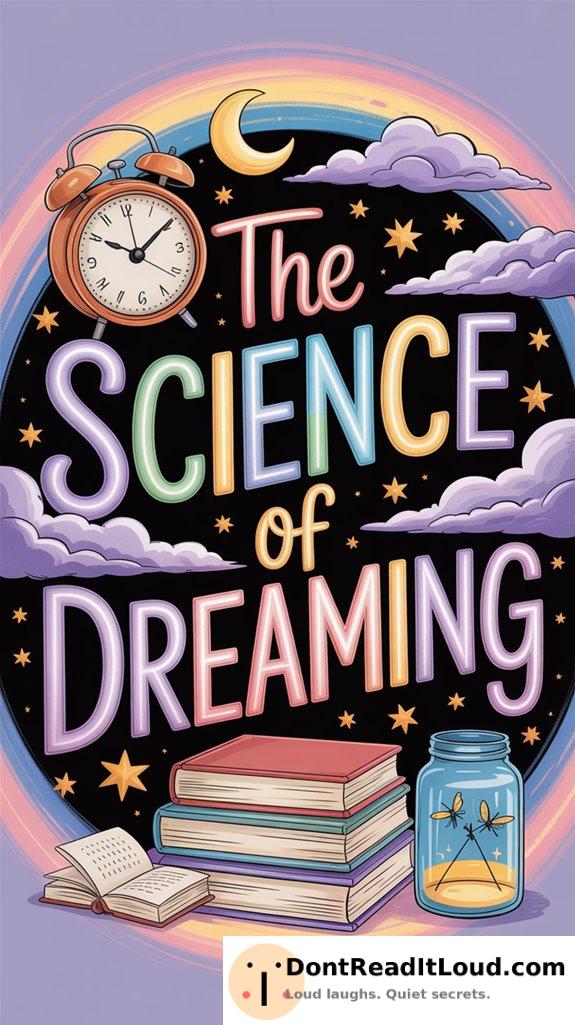
The science of dreaming reveals how your brain creates vivid dreams during different stages of sleep, with REM sleep producing the most memorable ones. Acting as a conductor, your brain coordinates neural activity to strengthen memories and blend ideas as you rest. Dreams can help you practice facing challenges or reveal hidden worries. New methods in dream analysis even make it possible to influence certain dreams. There is still much to learn about the mysteries of dreaming.
The Stages of Sleep and Dreaming
Although you mightn’t realize it, sleep is a complex process made up of different stages, each with a unique role in dreaming. Think of your brain as a DJ mixing tracks, with REM sleep stealing the show.
This stage is where the most vivid and memorable dreams occur, sometimes even allowing you to control the dream. Sleep stages follow a smooth routine, starting lightly and gradually becoming deeper before reaching REM.
During REM, your brain becomes highly active, creating intense and colorful dreams. So, when you hit snooze, remember your brain is ready for another round on the dance floor!
The Brain’s Role in Dream Formation
While you’re drifting into slumber, your brain is busy orchestrating the elaborate symphony of dreams. It’s like a maestro conducting an orchestra of chaos, with neural mechanisms playing the strings.
Meanwhile, memory consolidation happens behind the scenes, as your brain sorts through daily experiences—matching, mismatching, and occasionally misplacing a few memories along the way.
Your brain’s starring role in this nocturnal theater involves the thalamus, hippocampus, and prefrontal cortex, each taking on their own quirky roles in dream formation. The thalamus acts as the bouncer, letting sensory information in, while the hippocampus plays librarian, filing memories.
The prefrontal cortex? It’s the wild card, sometimes leading you down a rabbit hole of bizarre dreamscapes!
Theories on the Purpose of Dreams
As you explore the mysteries of dreaming, you’ll find that theories about their purpose are as varied as the dreams themselves. Some people think dreams are the brain’s way of mixing ideas together in unexpected ways. Others suggest dreams let’s practice for real-life challenges, like rehearsing a speech—except with dragons involved.
Fans of lucid dreaming say that dreams can be a playground where you’re in control, like a superhero in pajamas. People who experience nightmares often wonder about their meaning. Are they just scary movies from your subconscious, or is your brain warning you about that late-night snack?
Whatever their purpose, dreams offer plenty to think about long after you wake up.
Advances in Dream Analysis Research
Dream analysis research has taken significant strides in recent years, thanks to advancements in neuroscience and technology. You’re not just dreaming about flying with unicorns anymore—now, you can actually control those dreams! Lucid dreaming has become the rock star of sleep studies, allowing people to take charge of their dream experiences.
Meanwhile, nightmare research is helping you confront those awkward dreams where you show up to work in your pajamas. Scientists are now able to peek into your brain while you’re catching Z’s, helping to unlock the mysteries behind your nighttime fears.
Conclusion
In exploring the science of dreaming, you’ve learned about the fascinating stages of sleep and the brain’s complex involvement in dream formation. You’ve encountered different theories explaining why we dream, each providing valuable perspective. Recent advances in dream analysis research are helping to shed light on these nightly mysteries. Gaining this understanding allows you to better appreciate the intricate relationship between sleep and dreams, deepening your awareness of this remarkable part of human experience.



